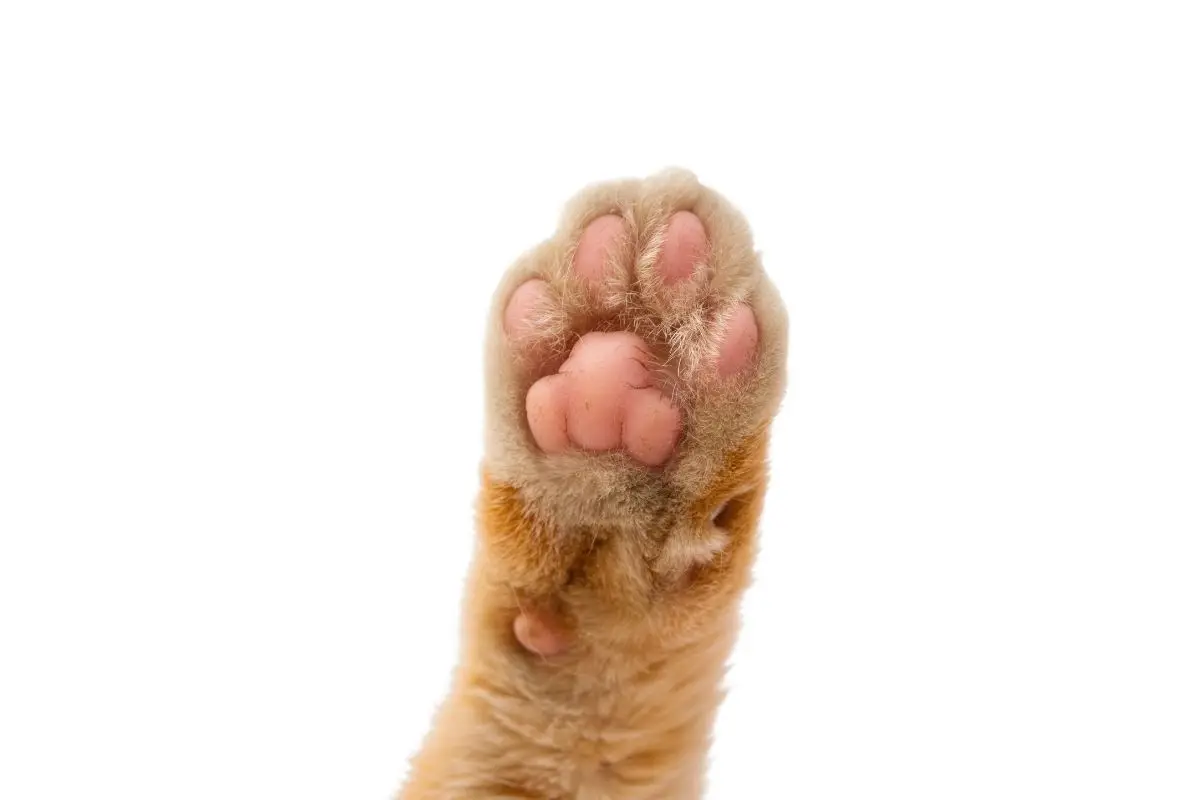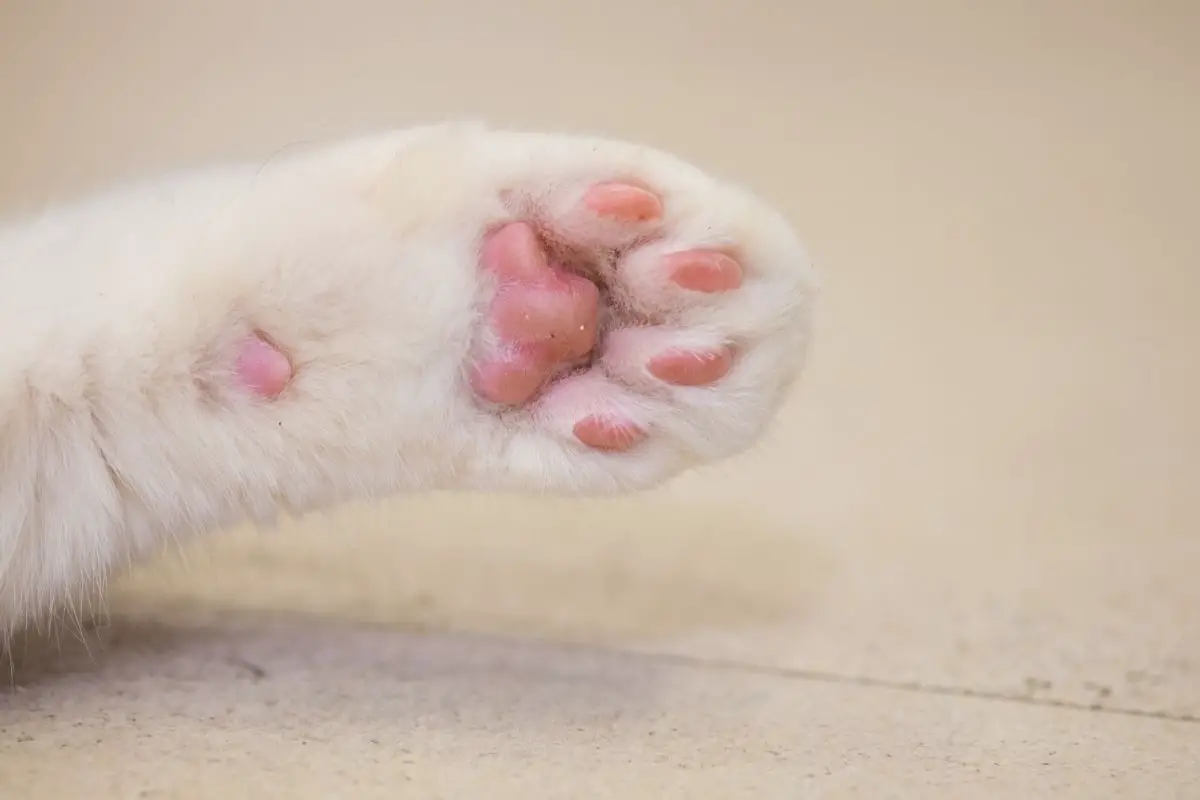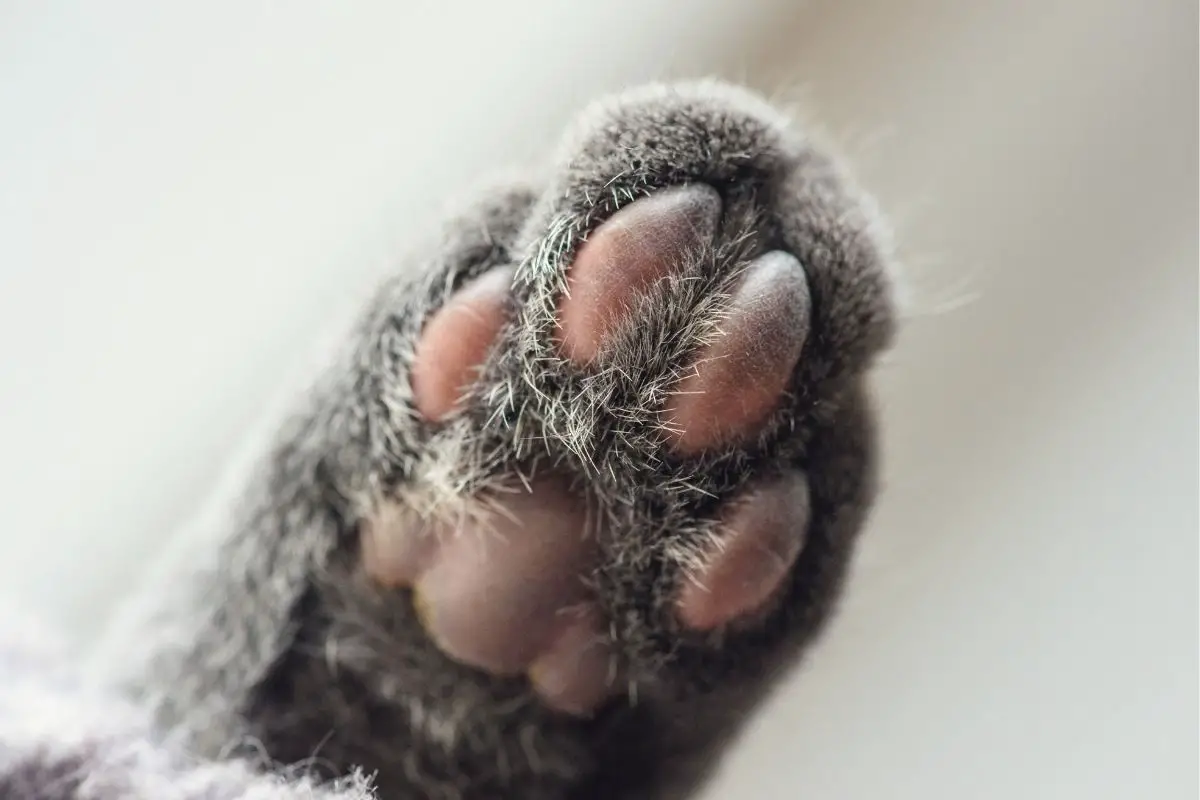If you have ever had cats as a pet, or are just generally interested in our feline friends, then you will be intrigued about what makes them tick.
When we think about cats’ anatomy, the legs and paws are of incredible importance. The reason for this is that cats are so flexible and agile.
They can move around with ease, and even jump over incredibly high things (recently, I saw our beloved cat Tyb jump about 8 foot into the fair from a sitting start).
This is why we need to understand the anatomy of cats if we want to help them live long, happy lives, full of energy and leaps.
Read on to learn more about the anatomy of your cat’s paw.
Contents
What Does Cat Paw Anatomy Look Like?
The cat paw is a unique structure, with many interesting features that make it an important part of the feline anatomy.
The paw has two layers: the outer skin layer called epidermis and the inner layer called dermis.
Cats have five toes and claws on each front foot, but they only have four claws on their back paws. The fifth toe is called the dew claw or pad.

This extra digit helps cats walk with more agility, climb trees, and jump long distances.
This dewclaw doesn’t usually touch the ground, but will assist when the whole foot is pressed to a surface. So, in total, the cat paw has 18 toes – contrary to the expected 20 toes.
The paw has two joints: the wrist joint and the ankle joint. The wrist joint connects the paw to the forearm, while the ankle joint connects the paw to its leg.
Cats use these joints to rotate their paws forward and backward, which allows them to step up onto objects.
The paw consists of several bones that make it strong and sturdy.
These include the carpal bone, metacarpal bone, phalanx bone, sesamoid bone, cuboid bone, navicular bone, proximal interphalangeal joint, distal interphalangeal joint and the pisiform bone.
The paw also contains many muscles that allow the cat to move its limbs freely.
These include the flexor digitorum superficialis muscle, flexor digitorum profundus muscle, extensor digitorum communis muscle, abductor pollicis brevis muscle, adductor pollicis muscle, lumbrical muscles, palmar digital flexors, dorsal digital flexors, plantar digital flexors, medial and lateral gastrocnemius muscles, tibialis cranialis muscle, tibialis posterior muscle, peroneals muscles, quadriceps femoris muscle, biceps brachii muscle, triceps brachii muscle and supraspinatus muscle.
How Do Cats Walk?
Unsurprisingly, cat’s paws have been specifically anatomically evolved to help them to walk (this is their main function, after all!).
When walking, the cat uses its paw to push off the floor, and then rotates its paw backwards and forwards to propel itself along.
This rotation of the paw is done by using the muscles mentioned above.
As the paw rotates, the muscles contract and relax, creating an alternating movement. In this way, the paw moves forward, and then pushes off again, before rotating once more. This process repeats until the cat reaches a destination.
These movements are not simple one-way actions, as the cat can also lift its paw off the ground, allowing it to glide across the floor. This is why cats are able to run at speeds of up to 30 miles per hour!
However, the way that they walk is pretty different to the way we walk – as you will know, humans walk by putting weight on their heels and the balls of their feet, however, cats walk on the balls of their feet and their toes – much like a ballerina would!
Thankfully, though, their skeletal and muscular system has developed so that this way of walking is natural, comfortable, and doesn’t put strain on the system – unlike how humans would feel if we spent the whole day walking on the tips of our toes.
Sweat Glands And Scent Glands In Cat Paws
As well as having numerous muscles, the cat paw also has glands that produce sweat and scent in their paws.
There are three types of glands found in the paw: sebaceous glands, apocrine glands and eccrine glands.
Sebaceous glands secrete oil into the fur, helping to keep it soft and shiny. They are located around the eyes, nose, ears, and tail.
Apocrine glands release a fatty kind of sweat. The smell produced by these glands helps to warn predators away from the area.
The sweat that is released by these glands is broken down by bacteria – which make the smell associated with sweat.
Eccrine glands are another kind of sweat gland that is found in cat paws, and are the kind of sweat glands that work towards homeostasis (or stable body temperature).
These glands are located in the pads of the foot, and they help to regulate the temperature of the paw. If the temperature rises too high, the glands start releasing sweat, and cooling occurs.
However, if the temperature drops too low, the glands stop producing sweat, and the paw starts warming up again.
The Color Of Paw Pads
Paw pads come in various colors depending on what kind of cat that they’re attached to.
The color of a cat’s paw pad is always the same color as their skin (or at least part of their skin, if they have a few different skin colors, such as a calico cat).
If your cat has a coat that is one solid color, then it is most likely that the pads on their paws will be the same color.
If it has a multicolored pelt, then the paw pads could be any color from pink to black, or may even be multicolored themselves.
How To Care For Your Cat’s Paws?
A cat’s paws are a really important part of their anatomy, and any problems with their paws can cause issues with the way that they walk, or even their mobility as a whole.
Cats are pretty adept at looking after and cleaning their paws themselves, but you should check your pet’s paws at least once a week, especially if they are an outdoor cat.

You should also clean them more often than that if your cat spends time indoors. Keep an eye out for dirt, stones, cuts, abrasions and thorns.
Trim the claws regularly (cutting the tips at a 45-degree angle, and staying well away from the quick). This will protect your furniture from scratch marks, as well as preventing the claws growing round into the soft pads.
You should also try to avoid using harsh chemicals in your home – especially on the floors, carpets, or any kind of surface that your cat walks on.
These chemicals can cause skin irritation on the paw pad, and the cat may even ingest them by licking the chemicals off their paws.
How To Clean Cat Paws?
Cats’ paws need to be cleaned regularly, but the cat themselves usually takes care of this.
If you do have to clean your cat’s paws, then there are a few things that you should avoid doing when cleaning them. These include:
- Using harsh chemicals = Harsh chemicals can damage the paw pads, making them dry out and crack. It is best to use gentle products that do not contain ammonia or bleach.
- Avoiding hot water = Hot water can cause burns to the paw pads,
You can use a cotton bud to gently remove dirt and debris from between the pads, and then wipe them dry using a towel or a soft cloth.
It is recommended that you do not wash the pads yourself, as doing so can damage them.
How Do Cats Get Arthritis?
Arthritis is an inflammation of the joints, and it affects all animals, including humans.
It is caused by wear and tear on the joints, and when the cartilage wears down, the bones rub together causing pain and discomfort.
In addition to being painful, arthritis can cause stiffness and immobility.
As there are so many highly used joints in the paws, they are particularly susceptible to arthritis, in the same way that human hands are vulnerable to developing arthritis.
Arthritis is most common in older pets, although younger dogs and cats can develop it too. There are different types of arthritis, such as osteoarthritis, rheumatoid arthritis, gout, and septic arthritis.
Osteoarthritis is the most common type of arthritis, and it occurs when the cartilage between the bones begins to break down.
Rheumatoid arthritis is another form of arthritis, and it causes the body’s immune system to attack its own joint tissue.
Gout is a condition where uric acid builds up in the blood, which leads to swelling and pain in the joints. Septic arthritis is caused by bacteria entering the bloodstream through damaged tissues, and it is very rare.
There are some ways that you can help prevent arthritis in your pet. The first thing that you can do is make sure that your dog or cat gets plenty of exercise.
Exercise keeps the muscles strong, and it helps the joints move freely. Keeping active is one of the best ways to keep your pet healthy.
Another good thing to do is to ensure that your pet has access to fresh food, and that he or she eats a balanced diet.
This will help to maintain healthy weight levels to avoid putting excess strain on the joints, and it will provide essential nutrients that your pet needs.
You should also make sure that your pet does not spend long periods of time lying down, as this can lead to problems with posture and balance.
Finally, if you notice any changes in your pet’s behavior or appearance, then you should seek veterinary advice!
Final Thoughts
In conclusion, we hope that this article has helped you understand more about the anatomy of the cat’s paw, and how to look after it properly. Thanks for reading our article!
Continue Reading More Interesting articles about Cats here.



